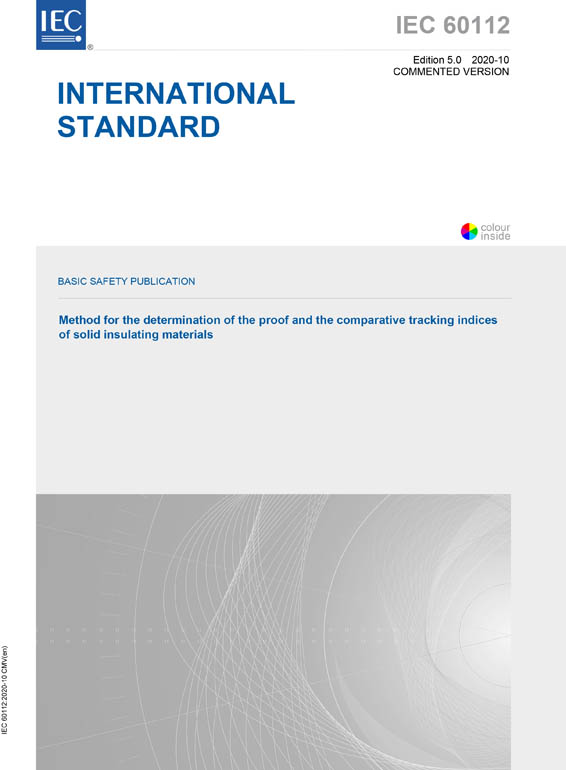IEC 60112:2020 CMV
Method for the determination of the proof and the comparative tracking indices of solid insulating materials
Ausgabedatum:
2020-10
Edition:
5.0
Sprache: EN - englisch
Seitenzahl: 27 VDE-Artnr.: 249269
IEC 60112:2020 CMV contains both the official standard and its commented version. The commented version provides you with a quick and easy way to compare all the changes between IEC 60112:2020 edition 5.0 and the previous edition IEC 60112:2003+AMD1:2009 CSV edition 4.1. Futhermore, comments from IEC TC 112 experts are provided to explain the reasons of the most relevant changes.
IEC 60112:2020 specifies the method of test for the determination of the proof and comparative tracking indices of solid insulating materials on pieces taken from parts of equipment and on plaques of material using alternating voltage. This document provides a procedure for the determination of erosion when required.
This test method evaluates the composition of the material as well as the surface of the material being evaluated. Both the composition and surface condition directly influence the results of the evaluation and are considered when using the results in material selection process.
Test results are not directly suitable for the evaluation of safe creepage distances when designing electrical apparatus.
This basic safety publication focusing on a safety test method is primarily intended for use by technical committees in the preparation of safety publications in accordance with the principles laid down in IEC Guide 104 and lSO/lEC Guide 51.
This edition includes the following significant technical changes with respect to the previous edition:Introduction of a new contaminant, solution C with a surfactant aligned with the test method of IEC 60587. The definition of the solution B was transferred to Annex B for backward reference.
Introduction of a screening test, considering the fact that some materials can withstand high test voltages, but fail at lower test voltages.
It has the status of a basic safety publication in accordance with IEC Guide 104.


